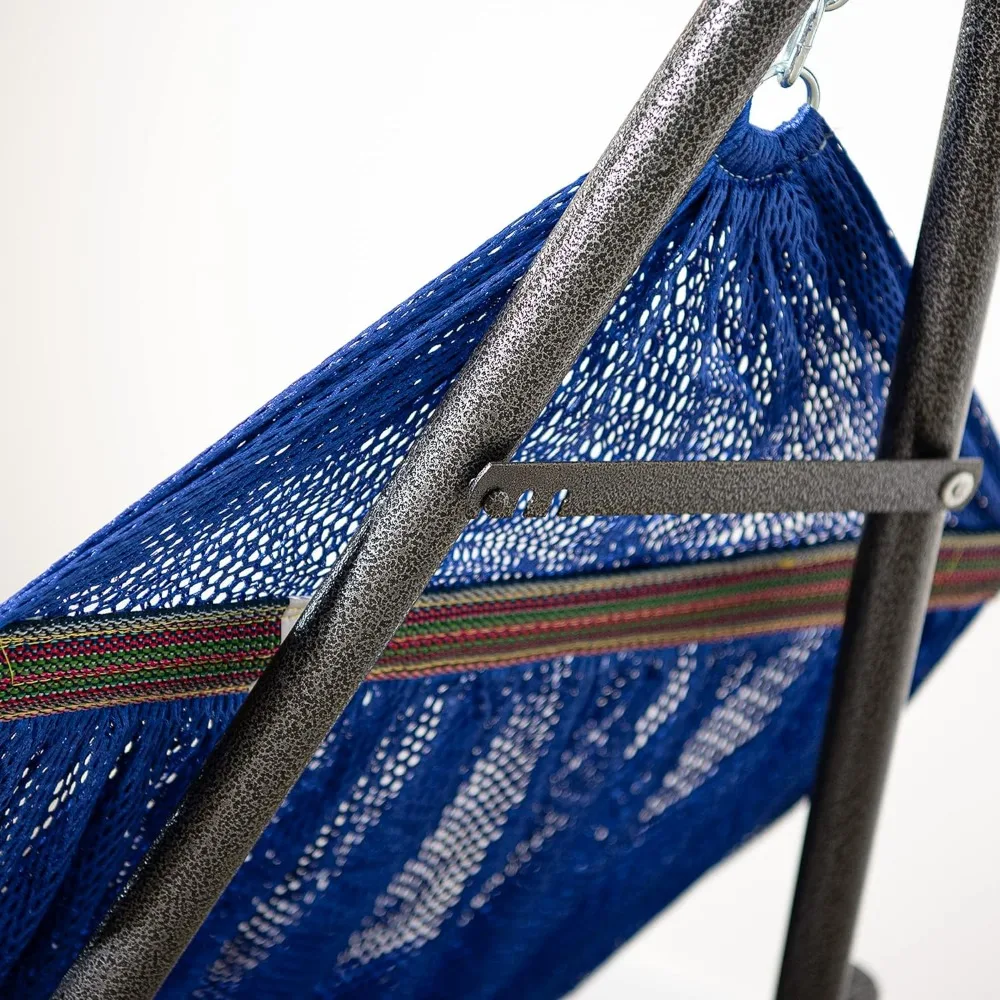Setting up the perfect hammock on the beach is more than just draping fabric between two trees; it’s about creating an oasis of relaxation. Picture this: a gentle ocean breeze, the scent of saltwater, and the soothing sounds of waves lapping against the shore. Whether you’re looking to catch some sun, read a good book, or take a nap while listening to the sounds of nature, a hammock can provide the ultimate experience. This article will guide you through expert tips and tricks for achieving the ultimate beach hammock setup.
Choosing the Right Location
The location of your hammock is crucial to ensuring maximum comfort and serenity. First, look for a spot that offers a good balance of sun and shade. You want to ensure that your hammock is set up close to the ocean, so you can easily enjoy the view and the sound of the waves, but also far enough away to avoid getting too much sun or sand. A shady spot under palm trees is often ideal, but be mindful of dropping coconuts—safety first! Additionally, consider the wind direction. A slight breeze can be refreshing, but a strong, gusty wind can turn your beach day into a frustrating experience if your hammock swings precariously or, worse, turns over entirely.
Check the ground underneath the hammock area. The last thing you want is to set up your hammock over sharp rocks or shells that could damage both your hammock and your skin. It’s also essential to set your hammock up away from other beachgoers for privacy and to ensure you have enough room to swing comfortably. Finally, be respectful of the environment. Avoid anchoring to live trees or plants, as they can be damaged, and ensure that you leave no trace when you leave.

Selecting the Perfect Hammock
Choosing the right hammock can elevate your beach experience from good to unforgettable. Various types of hammocks are available on the market, each with unique features. Traditional rope hammocks made of cotton provide a classic aesthetic but may not be the most comfortable for lounging on the beach, as sand can easily get caught in the material. Synthetic options, like nylon or polyester, are generally more durable and resistant to moisture, making them a better fit for a sandy environment.
Consider the size and weight of the hammock, as you’ll likely need to carry it to your beach spot. Compact, lightweight options are available that easily pack into a small bag. If you’re planning to use your hammock for solo relaxation, a single-person model is ideal, while couples or friends will appreciate a double hammock’s extra space. Moreover, look for features like built-in pockets for storage or mosquito netting if you’re planning on staying later into the evening, as these can enhance your overall experience.
The Right Accessories for Comfort
While a hammock may seem simple, investing in a few accessories can significantly boost your comfort level. First and foremost, consider a good, thick blanket to lie on, providing an added layer of support and warmth. Additionally, using a sleeping pad can help insulate you from the chilly beach air, particularly in the evening.
Don’t forget about comfort while relaxing—bring a couple of pillows for neck support. Inflatable or compressible travel pillows are great options for the beach since they pack down small. Other worthwhile accessories include a portable, collapsible footrest that can elevate your feet, enhancing relaxation. Most importantly, don’t neglect hydration; keep a cooler nearby filled with refreshing beverages to sip while you unwind.
Mastering the Installation
Once you’ve selected the perfect location and hammock, the next step is the installation process. If your hammock has spreader bars, you’ll want to ensure that you’re setting it up between two sturdy anchoring points—preferably trees or strong poles. Use rope or straps that are designed for hammocks to avoid damaging the trees while securing your setup. Make sure to allow enough slack to create a gentle arch in the hammock when you lie down; this will make your lounging experience much more comfortable.
Measure the distance between your chosen support points beforehand, as the typical setup requires about 10 to 15 feet of separation. If you’re using straps, loop them around the sturdy points and fasten them securely, ensuring they can hold your weight and any additional movement. When it comes to adjusting the height, a good rule of thumb is to hang your hammock about 18 inches off the ground. This allows easy access while also giving significant clearance against sand or debris—plus, it’s the perfect height for a quick swing.

Creating the Ideal Ambiance
Setting the right atmosphere for your beach hammock retreat goes beyond just the hammock itself. You can enhance the environment with a few thoughtful touches. Start by arranging your personal items around the hammock: your books, sunscreen, and snacks should be easily accessible. If you’re planning to enjoy a long day at the beach, consider bringing a small umbrella or a shade canopy if you’re in a particularly sunny spot. A pop-up tent can also provide a multi-purpose solution by offering a shaded area for changing or storing gear.
Lighting can transform your relaxation spot, especially as the sun begins to set. Battery-operated fairy lights or lanterns can create a cozy, magical ambiance. Consider bringing a portable, beach-friendly rug to define your lounging area and add a touch of softness underfoot.
Safety and Maintenance Considerations
While enjoying your beach hammock, it’s crucial to think about safety and maintenance to ensure a worry-free experience. First and foremost, always check the attachment points. Weather changes can affect the sturdiness of trees, and it’s best to take a quick look at the trunk and branches before settling in. Additionally, be cautious about the ground beneath you; rocks, roots, or uneven sand can create hazards when getting in and out of the hammock.
Once you’ve set up, stay aware of the weather conditions. Be judicious with your time outside as clouds roll in, and be prepared to relocate quickly if rain threatens; waterlogged hammocks can become heavy and difficult to manage. Bring a waterproof plastic bag for storage to safeguard your belongings.
The Joy of Disconnecting
One of the most fulfilling aspects of spending time in a hammock on the beach is the opportunity it creates for disconnection. In an age rife with constant digital notifications, there’s something liberating about unplugging—if only for a few hours. Instead of scrolling through your phone, embrace the healing power of nature. Listen to the waves, breathe in the salt air, and allow yourself to be fully present.
Consider making your beach hammock time a technology-free zone, allowing for moments of introspection, reading, or simply gazing at the sunset. Bringing along a book can serve as an excellent distraction while also pulling you away from screens. You might find that this break from your device not only enhances your relaxation experience but also fosters creativity and inspiration.

Conclusion: Embrace the Experience
Setting up the perfect hammock on the beach is just the beginning of an enriching experience. From selecting an appropriate location and hammock type to ensuring safety and maintenance, every step contributes to creating a blissful retreat. By following these tips and tricks, you’ll create a personal oasis that invites relaxation, rejuvenation, and reconnection.
Whether it’s soaking up the sun, losing yourself in a book, or napping to the sound of breaking waves, taking the time to set up your hammock just right will enhance your beach outing immensely. So grab your hammock, the essentials, and prepare for an unforgettable day by the sea. Embrace the tranquility, indulge in simple pleasures, and let the rejuvenating energy of the beach fill your spirit. This is your time to unwind, recharge, and reconnect with what truly matters.
